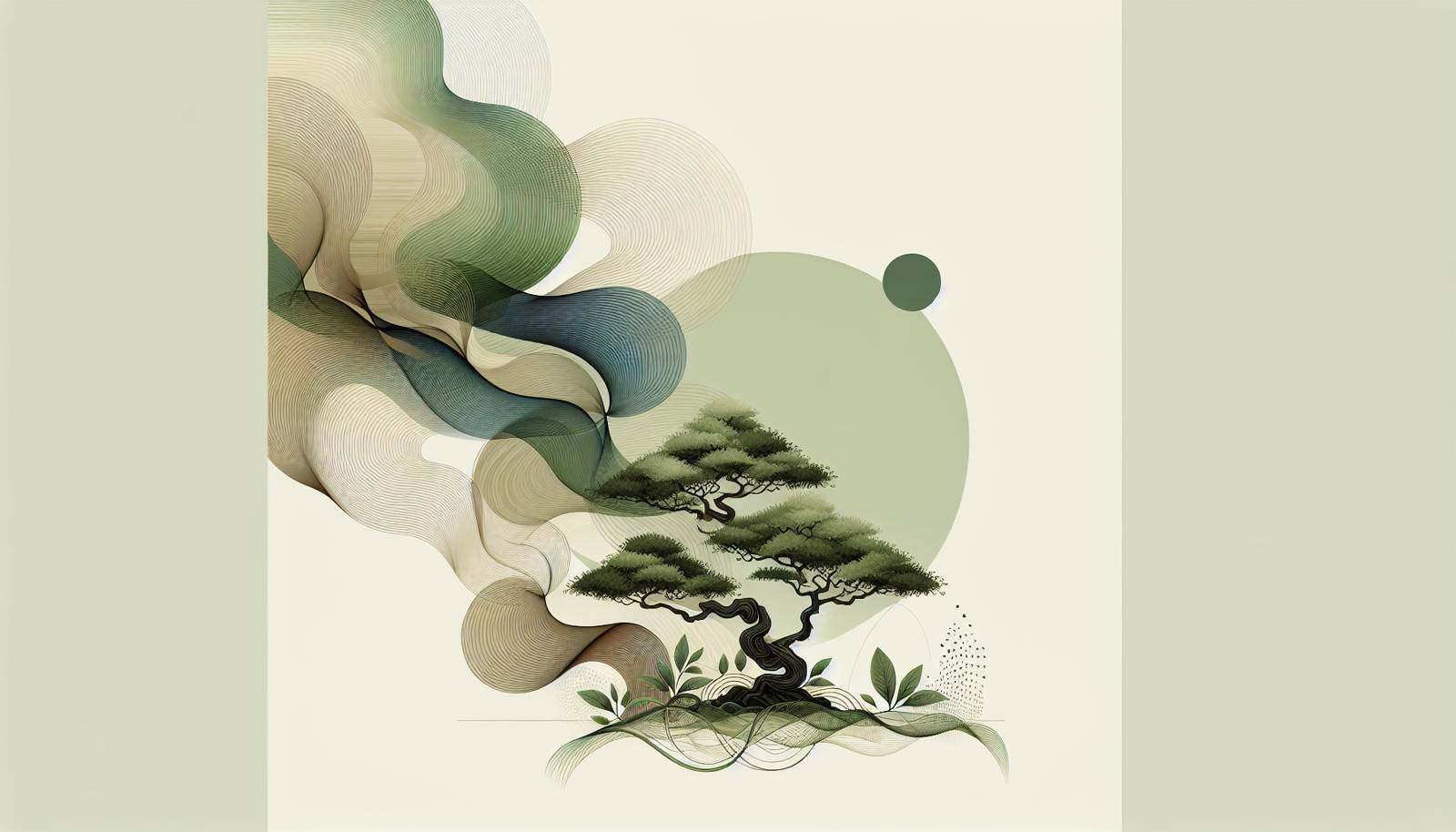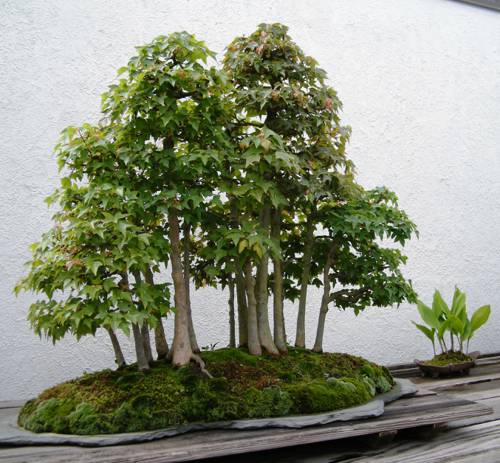
FAQ About Indoor Bonsai Tree Training Techniques

What are the basic indoor bonsai tree training techniques?
The fundamental techniques for training indoor bonsai trees include pruning, wiring, and repotting. Pruning involves cutting branches and leaves to maintain shape and size. Wiring helps to bend and shape branches in the desired direction. Repotting periodically refreshes the soil and allows root pruning to control growth.

How often should I prune my indoor bonsai tree?
The frequency of pruning depends on the type of bonsai and its growth rate. Generally, deciduous bonsai are pruned once in late winter or early spring before new growth starts, and again in mid-summer. Evergreen bonsai may require less frequent pruning, typically once a year. Regular observation of growth patterns will help you decide the best pruning times.

Why is wiring important in bonsai training?
Wiring is essential in bonsai training as it allows you to guide and shape the branches into desired positions. By carefully wrapping wire around the branches, you can bend them gently into artistic shapes that mimic the appearance of mature trees in nature. Wiring helps maintain the bonsai's aesthetic balance and enhances its visual appeal.

What soil is best for indoor bonsai trees?
Indoor bonsai trees require well-draining soil to prevent root rot and ensure healthy growth. A mix of akadama, pumice, and lava rock is often used. This combination retains moisture while allowing excess water to drain, and provides essential nutrients. Different bonsai species might have specific soil preferences, so it's important to research the needs of your particular tree.

How do I choose the right pot for my indoor bonsai?
The pot for your bonsai should complement the tree's size, style, and aesthetic. It should be shallow to accommodate the shallow root system typical of bonsai trees, and include drainage holes to prevent waterlogging. The color and shape of the pot should accentuate the tree's features, balancing the overall look of the bonsai display.

What is the best lighting for indoor bonsai trees?
Indoor bonsai trees require bright, indirect light to thrive. Position your bonsai near a south or west-facing window to ensure it receives sufficient natural light, but avoid direct sunlight which can scorch the leaves. If natural light is insufficient, consider using full-spectrum grow lights to supplement the light levels.

How do I water my indoor bonsai properly?
Watering a bonsai requires consistency and attention to the tree's needs. Check the soil moisture regularly by touching the soil. If the top layer feels dry, it's time to water. Ensure you water thoroughly until it runs out of the drainage holes, but avoid letting the tree sit in water as this can lead to root rot.

Can I use fertilizer on my indoor bonsai tree?
Yes, fertilizing is beneficial for indoor bonsai trees to provide essential nutrients. Use a balanced, water-soluble fertilizer specifically formulated for bonsai. Apply it every two to four weeks during the growing season, reducing the frequency during winter when the tree's growth slows down.

What are common pests for indoor bonsai trees, and how can I control them?
Common pests affecting indoor bonsai include spider mites, aphids, and scale insects. Regular inspections, maintaining humidity, and proper airflow can deter these pests. If pests are present, gently wash the leaves with lukewarm soapy water or use an appropriate insecticidal soap to eliminate the infestation.

How does humidity affect my indoor bonsai tree?
Humidity is crucial as many bonsai species originate from humid environments. Low indoor humidity can cause leaf drop and reduced growth. Increase humidity around your bonsai by placing a tray with water and pebbles beneath the pot or using a humidifier. Misting the leaves occasionally can also help maintain suitable humidity levels.

How often should I repot my indoor bonsai tree?
Repotting is typically required every two to three years for young bonsai and every three to five years for older trees. Repotting involves renewing the soil, checking the root system for health, and pruning the roots to promote new growth. The best time for repotting is in early spring when the tree begins its growth cycle.

What species of trees are suitable for indoor bonsai?
Several tree species adapt well to indoor environments. Popular choices include Ficus, Jade, Olive, and Chinese Elm. These species are hardy, tolerate indoor conditions well, and are suitable for beginners and experienced enthusiasts alike.

Can I keep my indoor bonsai tree outside?
While indoor bonsai trees can be placed outside temporarily during mild weather conditions, they should not be exposed to extreme temperatures, heavy rain, or direct sunlight for long periods. Transitioning them outdoors for short periods can help boost their health by increasing exposure to natural light and fresh air.

How do I encourage flowering in my indoor bonsai tree?
To encourage flowering, ensure that your bonsai tree receives adequate light, proper watering, and suitable fertilizer with a higher phosphorus content to support bloom production. Pruning at the correct time to optimize energy distribution can also enhance flowering, depending on the species.

How can I tell if my indoor bonsai is healthy?
Signs of a healthy bonsai include vibrant green leaves, new growth, and a strong root system. Additionally, consistent growth patterns and absence of pests or diseases are indicators of good health. Regular monitoring and proper care can help maintain the bonsai's vitality and address any issues promptly.

What is the purpose of jin and shari techniques in bonsai?
Jin and shari are techniques used to simulate the natural beauty of aged trees with deadwood. Jin involves removing bark from branches, leaving them to appear as stark, barren wood. Shari refers to removing sections of bark from the trunk. Both techniques create visual interest and add to the ancient appearance of the bonsai.

Can I bonsai any type of plant indoors?
Not all plants are suitable for bonsai, especially indoors. Plants that naturally have small leaves or needles, like certain trees and shrubs, are better suited for bonsai because they maintain proportion in miniature form. It's important to choose species known for their adaptability to constrained growth environments when selecting indoor bonsai trees.

What is the best temperature range for indoor bonsai trees?
Most indoor bonsai trees prefer temperatures that mimic natural subtropical environments, ranging from 60 to 75 °F (15-24 °C). Extreme temperature fluctuations can stress bonsai trees. Keeping consistent, moderate temperatures will help maintain their health and growth indoors.

How do I deal with root rot in my indoor bonsai tree?
Root rot is typically caused by overwatering or poorly draining soil. To address it, gently remove the tree from its pot, remove infected roots, and repot the tree in fresh, well-draining soil. Adjust your watering routine to match the tree's needs, allowing the soil to dry out slightly between waterings.

Why is leaf pruning important in bonsai training?
Leaf pruning helps in maintaining the bonsai's shape and encourages the tree to produce smaller leaves and denser foliage, enhancing its miniature appearance. Removing larger leaves redirects energy to smaller ones, promoting compact, well-proportioned growth and improving overall aesthetics.
